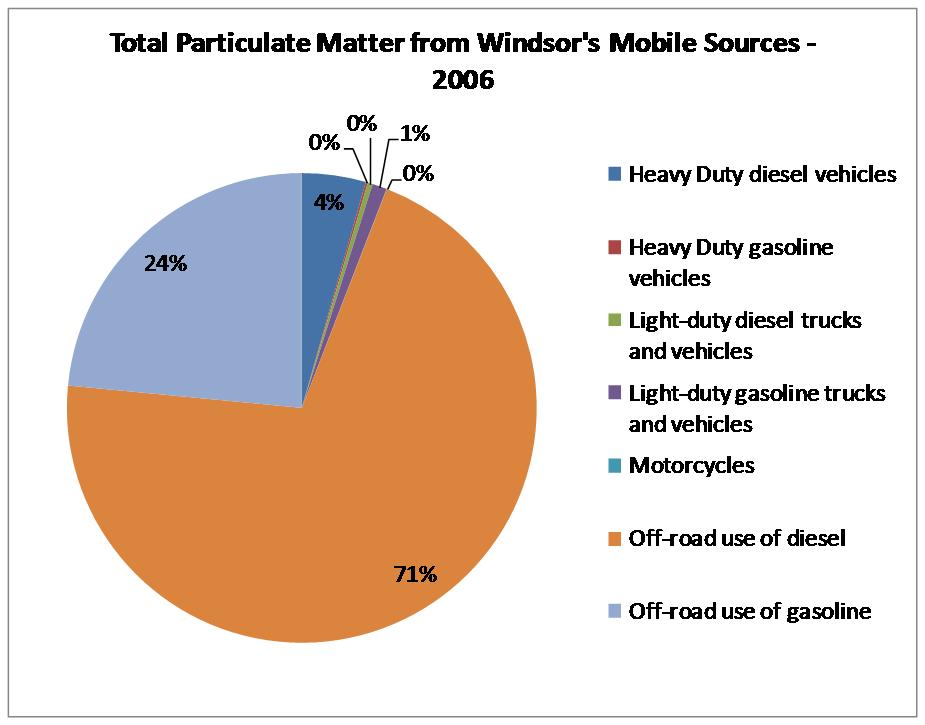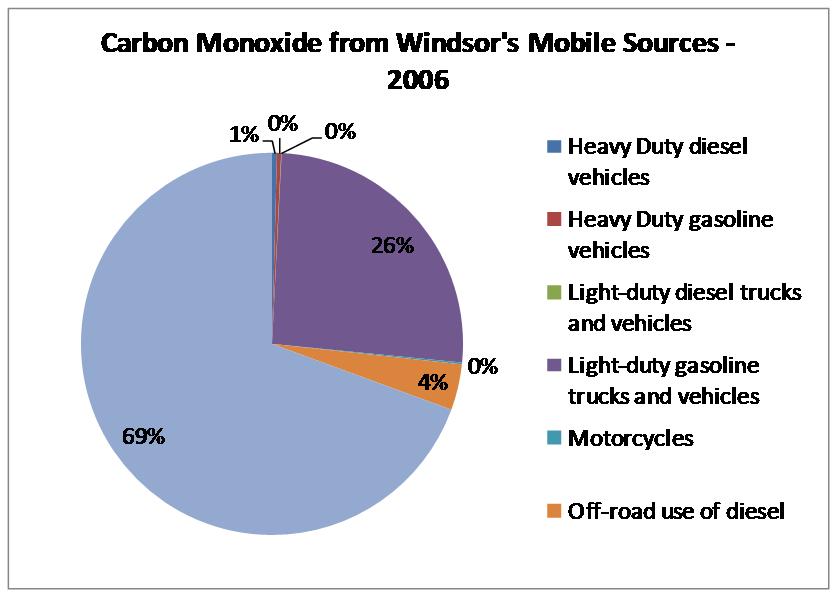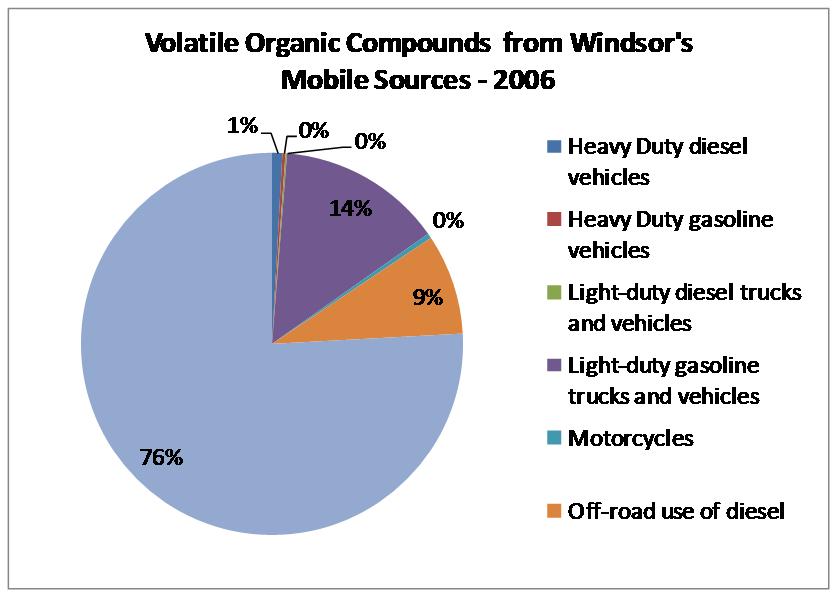Lawnmowers and Small Gas Engines
Did you know?
The use of off-road gasoline and diesel engines is a major contributor to air pollution in the City of Windsor. In fact, emissions from off-road gasoline and diesel engines contribute more particulate matter (PM), volatile organic compounds (VOC) and carbon monoxide (CO) than any other mobile sources.
It is estimated that 70 percent of Canadian households own a gas powered lawnmower.
Statistics:
According to Statistics Canada, gas powered lawn equipment releases about 80,000 tonnes of emissions in Canada every year, using 151 million litres of gasoline.
Based on Environment and Climate Change Canada data, mobile sources contributed approximately 1 percent of the total particulate matter, 21 percent of the VOCs and 69 percent of the CO emitted in Windsor during 2006. The following sections explain why this is important and shows the significance of off-road use of gasoline and diesel engines.
Note, off-road use of gasoline engines includes any application not licensed to use on-road including lawnmowers, chainsaws, weed whippers, forklifts and recreational vehicles. Off-road diesel engines include those used in agricultural and construction equipment.
Particulate Matter (PM)
Fuel combustion contributes to the release of fine PM that can penetrate into the lungs, affecting our health.
The graph on the right (click to enlarge) shows the breakdown of PM emissions from mobile sources in Windsor. Of note, the use of off-road gasoline engines and off-road diesel engines contribute 24 percent and 71 percent, respectively to PM emissions from mobile sources.
The most common health effects include irritation of eyes, throat and lungs. PM is also responsible for wheezing and breathing problems in people with asthma, COPD and other lung diseases. It can also contribute to cardiovascular health problems, including heart attack in people with certain pre-existing heart diseases. It can also reduce your capacity to resist infection.
Fine PM is also responsible for environmental impacts such as corrosion, soiling, damages to vegetation and reduced visibility.
Carbon Monoxide (CO)
CO is produced by natural processes like volcanoes and forest fires. However, the most common sources are human activities that involve the burning of fossil fuels.
The transportation sector accounts for 65 percent of all CO emissions from human activities in Ontario.
The graph on the right (click to enlarge) shows the breakdown of CO emissions from mobile sources in Windsor. Of note, the use of off-road gasoline engines and off-road diesel engines contribute 69 percent and 4 percent, respectively to PM emissions from mobile sources.
CO reduces the oxygen that your body tissues receive, which is particularly bad for brain, heart and general health.
Volatile Organic Compounds (VOCs)
The graph on the right (click to enlarge) shows the breakdown of VOC emissions from mobile sources in Windsor. Of note, the use of off-road gasoline engines and off-road diesel engines contribute 76 percent and 9 percent, respectively to PM emissions from mobile sources.
VOCs and nitrogen oxides (NOx) react in the presence of sunlight to produce ground level ozone. Ground level ozone is bad for our health, unlike the ozone layer in the upper atmosphere which is beneficial in protecting us from harmful ultraviolet radiation.
Ozone reduces lung function, even at levels equal to the one-hour standard of 80 parts per billion (80 ppb). More people are admitted to hospital for respiratory problems on or just after higher ozone days.
Ozone causes agricultural crop loss each year in Ontario and noticeable leaf damage in many crops, garden plants and trees.
Ground level ozone and particulates contribute to the formation of smog.
How to reduce your impact!
- Newer four-stroke gas engines are 70 percent more efficient than two-stroke engines.
- Electric mowers reduce pollution by 90 percent with energy costs typically no more than $5 per year and noise levels about half of gas mowers.
- Push reel mowers produce 0 emissions! They are now much lighter than those of the past.
- If you use a gas-powered mower, please do not use it during smog advisories or warnings.
For more information on Environmental Initiatives
- Phone: For general inquiries call 311. For detailed inquiries call 519-255-6100 ext. 6127.
- Email: emp@citywindsor.ca



